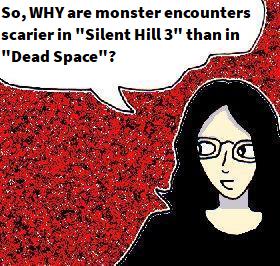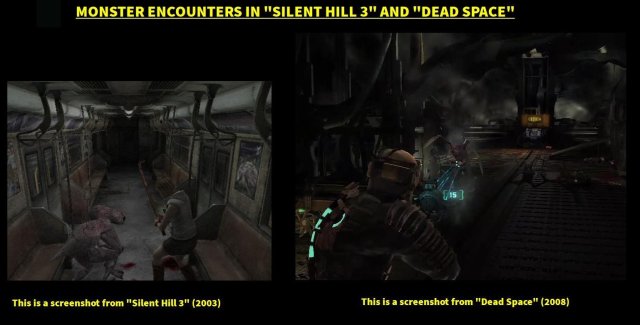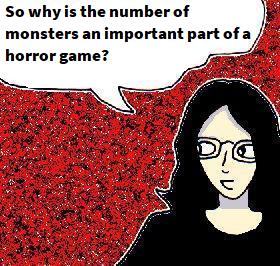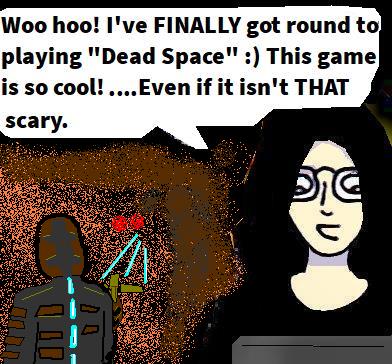
Well, it certainly took long enough but I’ve finally got around to completing “Dead Space” (2008) 🙂 Ever since I watched “Dead Space: Downfall” (2008) and read B. K. Evenson’s “Dead Space: Martyr” (2010) back in 2014, I’ve wanted to play this game – since it is literally “zombies in space” 🙂
Somehow, it took until mid-late March this year before I noticed that a DRM-free copy of the PC version of it was on sale on GOG. Even though the reviews below it seemed to be rather mixed, I decided to give this game a chance – and I’m so glad that I did 🙂
So, let’s take a look at “Dead Space”. Needless to say, this review may contain SPOILERS and GRUESOME IMAGES (but I’ll try to keep them to a minimum).
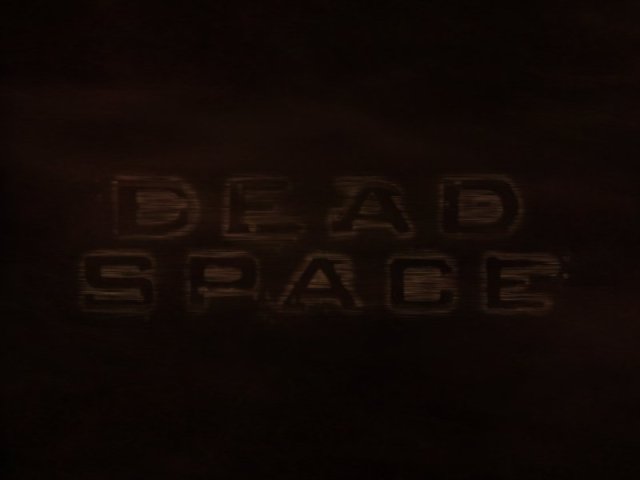
Set in 2058, you play as Isaac Clarke – a crew member of a small spaceship called the Kellion that has been sent to investigate a mining vessel called the USG Ishimura that has run into problems in orbit around a planet called Aegis VII. Isaac’s partner, Nicole, works as a doctor on board the Ishimura too.
However, there is complete radio silence from the Ishimura and, after a crash landing, the team find the ship to be eerily deserted…. Or is it?

Well, it obviously isn’t. It would be a very boring game if it was!
One of the first things that I will say about this game is that it’s a really cool sci-fi action game with some fairly decent horror elements too.
If you enjoy movies like “Event Horizon” (1997), “The Thing” (1982) or “Aliens” (1986) and/or want to play a more suspenseful third-person perspective version of something like “Doom 3” (2004) or “Quake 4” (2005), then you’ll be at home here. Yes, it didn’t really scare me as much as I’d expected, but there were stretches of time when I was playing with a huge grin on my face because of the sheer awesomeness of it 🙂

Woo hoo! THIS type of sci-fi 🙂
Still, I should probably start by talking about the game’s horror elements – which consist of a mixture of monster horror, body horror, creepy/claustrophobic locations, creepy characters, jump scares/suspense, gory horror, psychological horror and cosmic horror.
Even though experienced horror game fans are unlikely to find it too terrifying – thanks to it’s empowering action elements, slightly faster pace and heavy emphasis on “jump” moments – these elements really help to add a lot of edgy “gothic sci-fi” atmosphere to the game and can occasionally be moderately frightening too.
I cannot praise the monster designs in this game highly enough 🙂 Yes, the game throws enough of them at you that they quickly stop being scary, but – on a purely visual level – they are still some of the most well-designed horror monsters that I’ve seen for a while. Whether it is the weird arms growing out of their backs, the way they walk/run, the noises they make or just the fact that they are inhuman alien zombies sculpted from human flesh, they are definitely some of the most… monstrous… monsters you will ever see in a horror game 🙂
Still, although there is a good variety of monster types (including a couple of large bosses) slightly later in the game, expect to fight the same two or three monsters over and over again in the very early parts.

Barry! It’s a monster!… Stay back, Jill. I’LL handle this!… Oops! Wrong game!
This game is also well worth playing for it’s atmosphere too 🙂 Almost the entire game takes place on board a large claustrophobic spaceship, and this game absolutely nails the kind of grimy, utilitarian “used future” look that defined the coolest classic sci-fi movies like “Alien” (1979) and “Blade Runner” (1982) etc…
Not only that, the mining ship setting also made me think of the long-running sci-fi comedy sitcom “Red Dwarf” too, which is always a good thing 🙂 Add to this lots of dramatic lighting, gruesome monsters, clever set design and a compelling backstory and this is a game that is worth playing for its atmosphere alone 🙂

Seriously, is sci-fi really sci-fi without THIS type of cool gloomy lighting?

New life… I mean, A new life awaits YOU on the off-world colonies….
Likewise, I loved the story of this game too 🙂 It is minimalist enough to seem both focused and ominously mysterious (in a Lovecraftian kind of way), but also dramatic enough to feel significant too. The game also has a rather compelling survival thriller plot too.
Not only can the player find lots of in-game documents/audio logs that add depth to the world of the game, but the few characters Isaac meets all seem to have their own agendas and you’re never sure who exactly you can and cannot trust for most of the game. Ironically though, the one obvious “villain” character in the game is actually the weakest character though – seeming more cartoonishly evil than anything else.
As for the actual gameplay, it is a third-person game that seems to have taken some influence from “Resident Evil 4” (2005), with it’s *groan* over-the shoulder camera. There’s even the obligatory mid-late 2000s gravity gun rip-off too. Yet, although it contains some elements that may be familiar to fans of the survival horror genre – such as limited inventory, fixed save points etc… It often feels more like a first-person shooter game in all but name. A thrilling and somewhat more suspenseful one, but still definitely more on the “action game” side of things.

Did I say “gravity gun rip-off”? Sorry, I mean “Kinesis module”. TOTALLY different…
Not only can Isaac move during combat, but – in a wonderfully grotesque twist – the monsters’ limbs and/or tenatacles are their weak points, pushing the player to aim precisely in order to save ammo. Yes, this emphasis on precise aiming in fast-paced situations does add tension to the game (or it would if I was playing on a console. Thankfully, the PC version has mouse support – which makes aiming a lot easier 🙂 ), but it is a skill that the player can learn… and feel like a badass when they do.
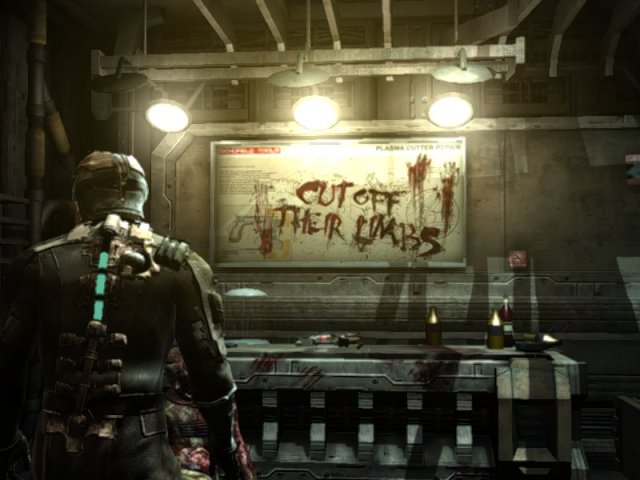
And no, this isn’t some clever hidden feature or mechanic. The game tells you about it… a lot.
Add to this the fact that monsters will often drop ammo or healing items upon death, the focus on fighting groups of monsters and the faster movement speed of the monsters… and this game often feels a lot more like a thrilling action game than a genuinely scary horror game.
Its really fun and cool, but not that scary if you’ve actually had some experience with seriously terrifying horror games that are deliberately made to be the polar opposite of an “empowering action game”.

Seriously, if you get the camera position just right, it almost looks like a first-person shooter game…
Still, the game does add some suspense via segments that take place in the eerily silent void of space – where the player also has to keep a careful eye on their suit’s oxygen levels. These segments are handled surprising well – with the time limits being short enough to add genuine suspense, but also long enough to not feel cheap or frustrating either.
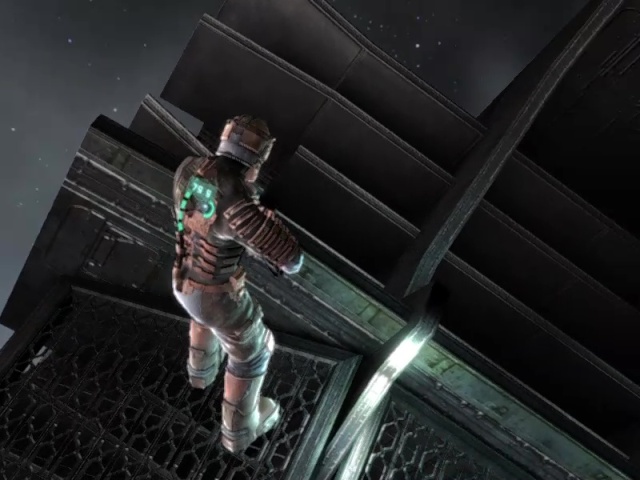
All together now… “It’s cold outside, there’s no kind of atmosphere...”
The game’s weapons are also reasonably well designed too – often, in a nod to the “Alien” films, consisting of re-purposed industrial equipment and a pulse rifle. All of the weapons have alternate firing modes too, although I only found one of these (eg: the ability to change the blade angle on the plasma cutter) to be genuinely useful though.
In addition to this, Isaac also has to complete a series of objectives too. Although the game includes a really cool “Doom”-inspired in-game map, the fact that you can summon a waypoint/guide at any time and the fact that Isaac has frequent radio calls with the surviving members of his ship’s crew kind of makes this game feel more like a modern “AAA” first-person shooter game than anything else. Still, it pulls this off reasonably well – and feels endearingly “cinematic”, like EA tried to make a scary survival horror game but were just too… EA… to do it properly. It’s adorable 🙂
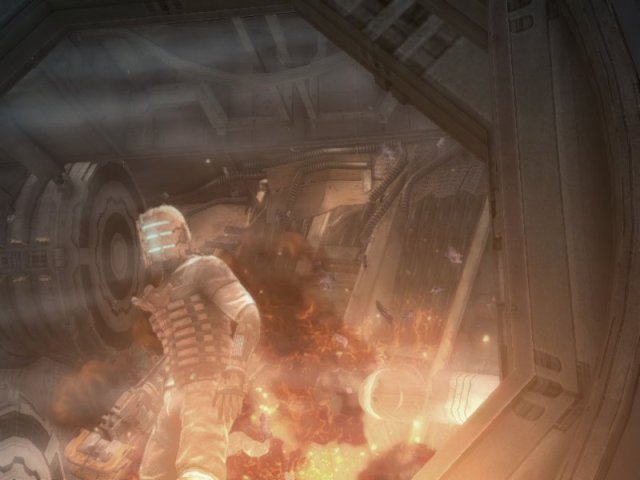
Awww 🙂 It’s so cute 🙂 They even keep the “Michael Bay pyrotechnics” to a minimum too…

And, to be fair, this “Blast the giant space monster with an infinite laser turret” set-piece is kind of badass…
Despite the fact that you can literally press a button to tell you where to go next – complete with a cool-looking laser animation – this game does reward exploration and also contains a certain amount of backtracking too 🙂
But, whilst you thankfully aren’t funnelled along a series of linear corridors, the game’s chapter-based system keeps the area you can explore at any one time relatively small. Yes, this stops the player from getting too lost – but if you’re expecting the freedom of something like “System Shock” (1994), then you might be disappointed. Likewise, the constant “Isaac, you need to go here and do this” structure of the game can get a bit repetitive after a while too.
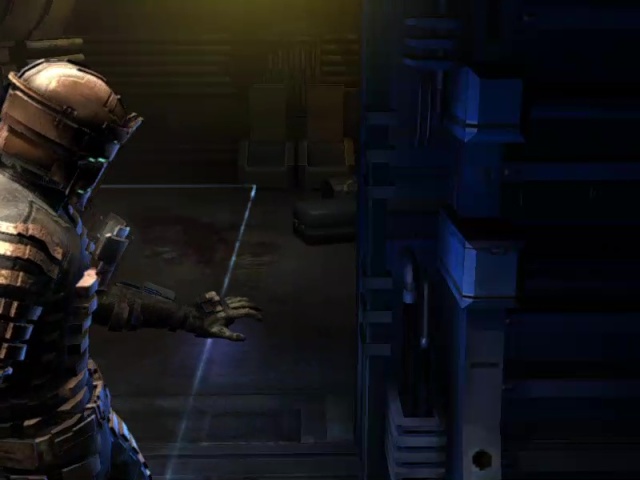
Yes, this laser guide is so cool-looking that Isaac even strikes a subtle “Look at me! I’m so awesome!” pose whenever he uses it. What? This is meant to be a horror game?

Hi, Isaac, I just thought that I’d call to say hello and… Only joking! I’ve got another objective for you! Ha!
In addition to this, Isaac can also find in-game currency, valuable items and upgrade “nodes” throughout the game. The game’s “shop” is also expanded as you find blueprints for additional items too.
This system is handled reasonably well, given that it only relies on in-game currency (EA hadn’t quite become evil enough to charge real money for in-game items at this point…), it can only be used in fixed locations and it encourages both exploration and resource management too.
Still, although the “shop” doubles up as an item box, the limited inventory space is generous enough that I stopped getting any “inventory full!” messages after upgrading my suit once or twice.
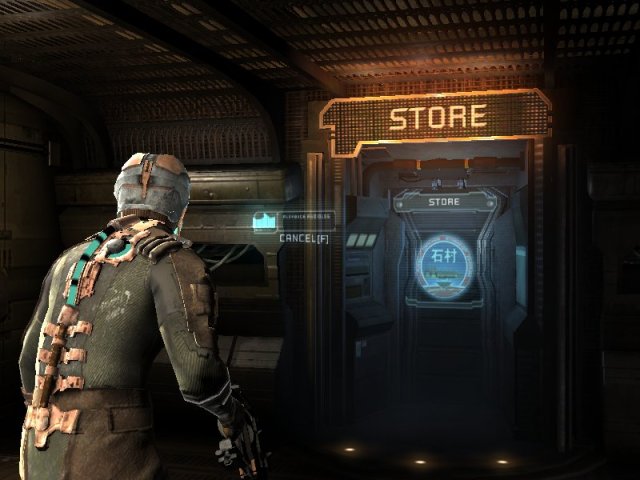
It’s an EA game with an in-game store… that doesn’t try to fleece you for real money. WOW! 🙂
And, yes, this game also contains a bit of “hand-holding” too. In addition to the waypoints/guide feature, there also seems to be a bit of randomisation and/or adaptive difficulty too. For example, re-playing areas I’d died in before sometimes seemed a little easier after the second or third go. Likewise, there’s a dedicated button for instantly using healing items, enemies seemed to drop more healing items when I was low on health, the game has “hidden” checkpoints so that you don’t lose too much progress after death etc…
Yes, these would probably be considered “quality of life” features, and I’m probably just more used to cruelly unforgiving older games, but they detract from the harsh and desolate mood of the game slightly. Still, they do reduce the amount of frustration during certain moments though.
Even so, this game does have a reasonably decent difficulty curve though. A couple of hours into the game, I’d originally planned to make a sarcastic joke about this game being “too EA-sy” but, as the game progresses, there is some actual challenge at times 🙂 Whether it is segments where the game hurls lots of monsters at you in relatively confined spaces, a small number of boss battles, some faster-paced mild puzzles or the times when you’re running low on health or ammo, this game does get more challenging as it goes along 🙂 Likewise, the fact that this game thankfully avoided “regenerating health” really adds a lot more tension, suspense and dramatic weight to the gameplay too 🙂

Actual… suspense… because the player actually has to care about their health level. What heresy is THIS?!
Still, some of the design elements here are really cool. One of the main features of this game is that all of the HUD elements take place in-universe, mostly consisting of holograms or glowing lights (such as the health meter on Isaac’s back). But, although this looks really cool – not to mention that it can startle players who expect the game to pause whilst checking their inventory – it doesn’t quite achieve it’s original purpose.
All of this stuff was meant to immerse the player in the game, yet a diegetic glowing HUD is still a glowing HUD… and it seems a bit too “game-y” for a horror game. I mean, there’s a good reason why the older “Resident Evil” and “Silent Hill” games kept their inventory and status screens separate from the actual gameplay.

Yes, the holograms and lasers look cool AF, but also – ironically – slightly immersion breaking too.
As for music and sound design, this game is excellent 🙂 Not only do all of the monsters sound suitably scary, but the game also has some wonderfully scary dynamic music that it plays during monster encounters too. Yes, this is used more as a jump-scare/faster pacing type thing than, for example, the ominous crackling radio static in the older “Silent Hill” games (which played before the monster encounter to build dread), but it is still very dramatic. Likewise, as you’d expect from an abandoned mining ship, there’s also lots of atmospheric ambient industrial noise too 🙂 The game’s voice-acting also fairly decent as well, without any of the corniness that you might expect from slightly older horror games.
As for length, this game is reasonably decent. Taking place over twelve “chapters”, this game took me about 10-12 hours to complete with only very infrequent walkthrough use (mostly just for strategy tips during boss battles). Likewise, after completing the game, it gives you some extra stuff for your next playthrough – so there is probably some small amount of replay value here too.
All in all, this is a really cool and atmospheric sci-fi action game 🙂 Yes, it is a bit too forgiving, empowering and fast-paced for experienced horror game fans to find it too terrifying, but the game’s horror elements really add a lot to the atmosphere though. Seriously, if you love this type of gritty industrial neon-drenched dystopian sci-fi, then this game is well-worth playing 🙂 It’s a thrilling action game with a strong horror flavour to it that, whilst mildly repetitive at times, was still a hell of a lot of fun to play.
If I had to give it a rating out of five, it would get at least a four.
